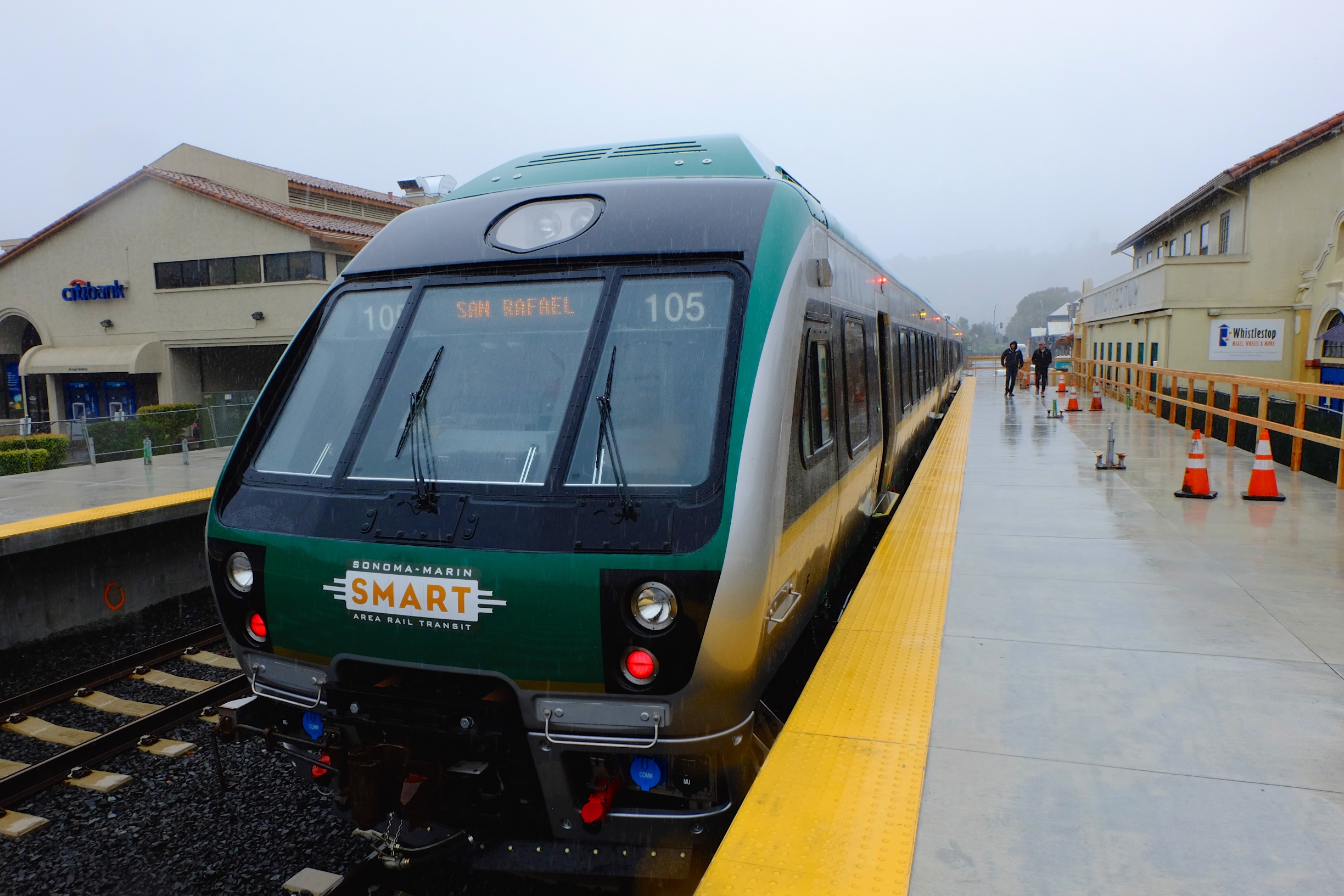Just two months ago, Marin and Sonoma Counties celebrated the extension of SMART, the North Bay's 45-mile commuter rail system, to Larkspur, where it finally connects to the ferry to San Francisco. Analysis by the Marin Independent Journal shows that 58,199 passengers rode SMART in December and 71,974 riders took it in January, "the highest counts for those months since SMART began passenger service in 2017" and an increase of 24 percent over January 2019.
Finally, riders from Sonoma and Marin can take traffic-free transit all the way to San Francisco. The lesson: when the train goes more places, more people ride it.
Now is definitely not the time to pull away from investing in further extensions by allowing the two counties' ¼ cent sales tax to expire. A "yes" vote on Measure I, which will be on the March ballot in Marin and Sonoma, would extend that tax to 2059. A "no" vote prohibits extending the tax and means that the important subsidy would expire in nine years. This is super important because the thirty-year sunset would enable SMART to refinance debt and borrow cash to build extensions to Healdsburg and Cloverdale, as well as increase operations.
Opponents point out that while ridership is impressive, it's not as high as it could be--or should be. They gloss over the fact that SMART got nailed by the global recession in 2009 just as it was getting underway. Ridership and revenue was also damaged by two years of disastrous fires.
And SMART was used to help with evacuations from those fires--proof that it is already an important part of the North Bay's infrastructure.
Opponents of the SMART train also rely on the tired argument that transit is subsidized, while conveniently ignoring the huge subsidies given to automobile travel in the form of road building, repairs, patrols, pollution, and lost productivity due to traffic.
They also are silent on the environmental destruction wrought by our monomorphic, auto-über-alles transportation system. Automobiles are the leading cause of greenhouse emissions, which no doubt made Sonoma's devastating fires even worse. Globally, traffic crashes are the leading cause of death for children and young adults aged 5 to 29 years. Lives in Marin and Sonoma are also lost because of deadly crashes. One of the ways to reduce all this harm is to increase transit use, which means giving residents a traffic-free alternative to driving.
Speaking of which, Measure I's well-funded opponents also make the claim that the train hasn't yet reduced traffic. That (intentionally?) misses the point: one train line isn't going to make a noticeable dent in congestion. That's why we need to build more. And for the thousands of riders who use SMART every day, including the riders who take their bikes on board with them, traffic ceases to be a problem.
Think of the irony of it: not so long ago nobody in the North Bay had to deal with traffic if they didn't want to, because there was a train network that served all its major towns and cities. That's gone. Instead, all you get is soul-crushing traffic on 101 and elsewhere.

Knowing what we know today, only an idiot would suggest that the obliteration of that rail systems was a good idea. SMART is a down payment on getting some of it back. Eventually, it should be extended north, as planned, as well as east and even south to downtown Larkspur, Mill Valley, and Sausalito. It should be double tracked. It should also be electrified, and provide frequent service. And--gasp--some day it should be extended across a bridge to Richmond and south to San Francisco, correcting the huge mistake Marin made back in the 1960s when it opted out of putting BART on the Golden Gate Bridge.
That's a far-off dream, of course. For now, the key is to build on this huge first step--and to not return to the dinosaur days of thinking that building and widening multi-million dollar freeways will solve traffic problems, and that the only form of transportation worth subsidizing is the holy automobile.
Vote yes on "I".






